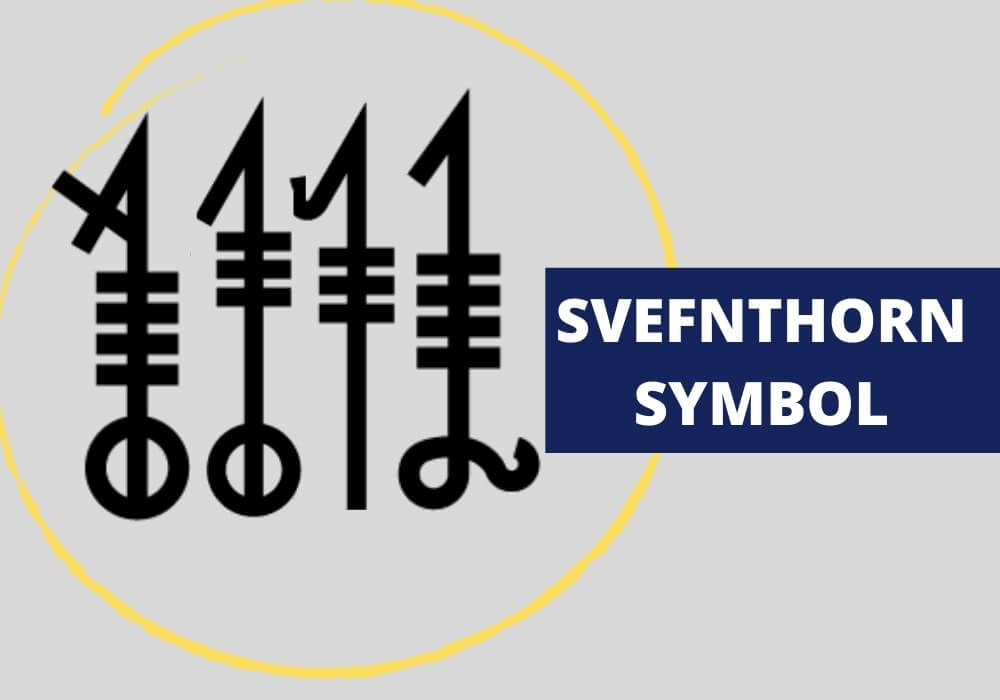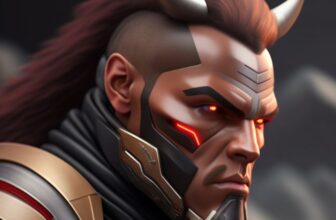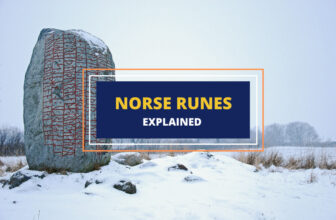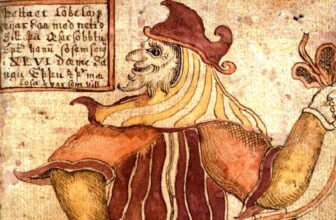
Table of Contents
The Svefnthorn is a popular Nordic symbol, believed to possess the power of causing someone to fall into a deep sleep. Though in folklore some people woke up from the sleep of their own accord, others could only be aroused from their slumber after the Sleep Thorn was removed. In fact, the title Svefnthorn comes from the root “svafr” or sopitor which is translated as the sleeper.
The Svefnthorn, or Sleep Thorn in old Norse, appears throughout many stories and tales of Norse mythology. Although it’s usually depicted as four harpoons, the symbol has many variations in its appearance. It’s been found in old Scandinavian homes, carved near bedposts to offer protection to the sleeper.
Let’s look at some of the tales and folklore that surround the Svefnthorn and how it’s used today.
Origins of the Svefnthorn
From all the sagas and grimoires that mention the Sleep Thorn, it’s unclear whether it’s an object, such as a needle or harpoon that is used to stab your victim with, or if it is something less lethal and merely a magical amulet that can be slipped under the pillow of your victim so that they fall asleep for a long time. It’s difficult to say, as this isn’t specified in any of the following accounts of the Svefnthron.
The Saga of the Völsunga
This poem recounts the beginning and destruction of the Völsung people. Within its account we find the tale of the Germanic hero Sigurd and the valkyrie (a female figure who chooses who dies and who survives in battle) Brynhild. According to the poem, Brynhild had been put into a long sleep by the god, Odin.
In the Saga of Völsunga we read:
“Before him (Sigurd) was a rampart made of shields, with a warrior dressed in full armor lying on the rampart. Taking off the warrior’s helmet, he discovered that this was a sleeping woman, not a man. She was dressed in chainmail that was so tight it seemed to have grown into her skin. With the sword Gram he cut through the armor, awakening the woman. “Is this Sigurd, son of Sigmund who awakens me?” she asked, “It is so,” answered Sigurd…Brynhild replied that two kings had fought. Odin favored the one, but she had granted victory to the other. Angered, Odin had stabbed her with a sleeping thorn.”
In this poem, we see that Brynhild was made to fall asleep after being stabbed with the sleeping thorn from Odin. This is believed to be the origin of the sleeping thorn concept.
The Huld Manuscript
Dating from the middle 1800s, the Huld Manuscript is a book with a collection of ancient Norse magic and spells. Within the text, there is mention of the Svefnthorn symbol which is said to cause one to fall asleep.
The ninth spell in the Huld Manuscript claims that:
“This sign (the Svefnthorn) would be carved on oak and laid under the head of the one who is supposed to sleep so that he cannot awaken until it is taken away.”
Accordingly, if you wanted a person to fall into a deep sleep from which they would not awaken until you decided, the power of the Svefnthorn would do the trick. Just carve it into a tree and when you feel like it’s time for the person to wake up, remove the symbol.
The Göngu-Hrólfs Saga
This entertaining tale recounts the story of King Eirik attacking the king of Novgorod, Hreggvid.
In the story, we meet Hrolf, a lazy person who has no real hope for the future. His father, irritated by the slothfulness of his son, tells him to go and make something of himself, so he does. He leaves home and battles the Vikings. After one of the battles and on his way to Russia, Hrolf meets Vilhjalm who asks Hrolf, to be his servant. Hrolf refuses, but Vilhjalm tricks Hrolf into the position. That is the beginning of the tumultuous relationship between Vilhjalm and Hrolf.
At one stage, in one of their many arguments, Vilhjalm is said to have stabbed Hrolf in the head with a sleep thorn. The only reason Hrolf woke up from the sleep was that the day after being stabbed, a horse landed on him and dislodged the thorn.
Variations of the Svefnthorn
Though there are different representations of the Svefnthorn, the most common image is that of four harpoons. Another variation of the Sleep Thorn is of vertical lines with a diamond attached to the bottom of each.
Some scholars believe that the Svefnthorn symbol is a combination of two different runes (the mystical alphabet of old Norse):
- Isaz rune – This rune, also known as Isa, is a vertical line meaning Ice or Stillness. It’s seen as the rune that centralises everything in an innate state.
- Ingwaz rune – Getting its name from the Norse God, Ing, who was believed to be the major divine player in uniting the Jutland Vikings. It is seen as a rune of peace and harmony.
Perhaps, as the scholars suggest, the Svefnthorn, is a joining together of these two runes:
Ice \ Stillness + Peace which is quite a good description of someone who is motionless and still while in an induced slumber thanks to the Sleep Thorn.
The Svefnthorn Symbol Today
For those of you how may have trouble nodding off at night and are looking for a remedy, the Svefnthorn may be the answer. Some believe that it can induce sleep and help with insomnia. As such, the symbol is placed under the pillow as a remedy. Like the dreamcatcher, it’s sometimes hung above the bed as a protective amulet.
The Svefnthorn is also a popular design on clothing or imprinted on jewelry. It’s also ideal as a charm to keep nearby.
In Brief
The ancient Sfevnthorn symbol continues to be popular today and remains one of the most mysterious and interesting of all the Norse symbols. It’s still used as a decorative or protective motif in clothing, wall hangings and other similar retail items.








